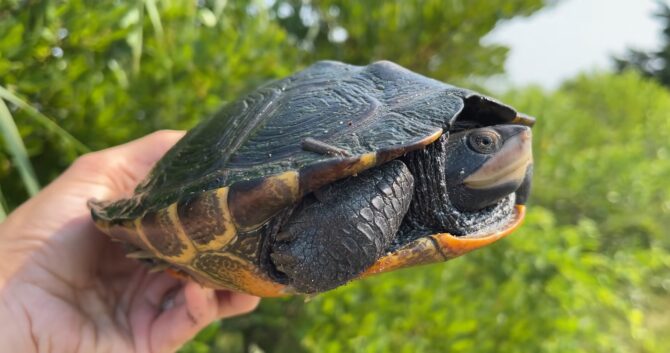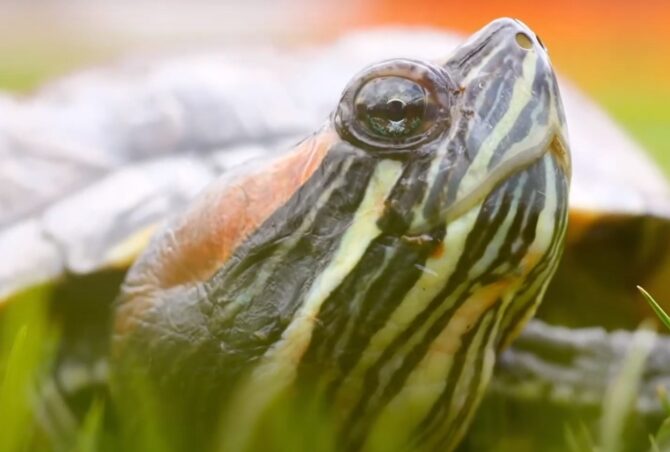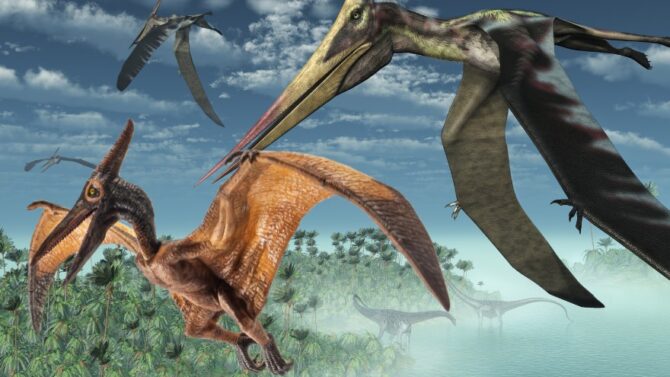Greetings! I am a passionate zoologist with years spent in the marvelous company of a variety of creatures, from the colossal to the minuscule, the ordinary to the extraordinary. My love for animals knows no bounds, and today, I’m thrilled to discuss the charming world of terrapins and turtles, two creatures often misunderstood and mislabeled.
So, buckle up as we embark on a journey to explore their fascinating differences and understand these shelled wonders better!
Definition and Classification
Understanding the scientific classification and definition of these creatures is crucial in discerning their main differences. The term “turtle” is universally used to describe species belonging to the order Chelonia, which is divided into two suborders: Pleurodira and Cryptodira.
Terrapins: A Mixture of Environments

Terrapins are predominantly a mixture of aquatic and terrestrial beings, mostly inhabiting brackish waters – a combination of fresh and salt water. They exhibit remarkable adaptations to live in such fluctuating environments, possessing limbs well-suited for both swimming and wandering on land.
Natural Habitat
- Brackish waters like estuaries and marshes.
- Can also be found in freshwater habitats occasionally.
Physical Features
- Limbs adapted for swimming and walking on land.
- Hard, protective shell.
It’s also intriguing to note that the term “terrapin” is chiefly used in the United States, while in other regions, terrapins might be simply classified under the broad term “turtle.”
Turtles: Masters of Land and Water

Turtles, on the other hand, have adapted to a range of environments, from terrestrial to marine. Different species of turtles can be sea-dwelling, fresh-water-loving, or even land-roaming. They are often characterized by their bony or cartilaginous shell developed from their ribs, acting as a shield.
Natural Habitat
- Freshwater habitats like rivers and lakes for some species.
- Oceans for sea turtles.
- Terrestrial environments for tortoises.
Physical Features
- Sea turtles have flippers adapted for swimming.
- Tortoises have sturdy, pillar-like legs adapted for walking on land.
Each species of turtle has evolved unique physical characteristics and behavioral traits adapted to their specific habitats, highlighting the vast diversity within the order Chelonia.
Dietary Habits
The dietary preferences of terrapins and turtles vary widely, reflecting their adaptive nature to different environments. A detailed look into their feeding habits provides insights into their survival strategies in their respective habitats.
Terrapin’s Culinary Choices

Terrapins are primarily omnivorous, their diet being a mix of plant matter and animal prey. They consume a variety of foods ranging from aquatic vegetation to small fish and invertebrates, illustrating their flexible dietary habits.
Common Food Items:
- Small fish and mollusks.
- Aquatic vegetation and algae.
- Invertebrates like insects and worms.
A terrapin’s diet is shaped by its habitat’s availability of food sources, and it adjusts its food preferences based on the seasonal availability of prey and vegetation.
Turtle’s Diverse Diet
Turtles exhibit a wide range of dietary habits, from herbivorous to omnivorous to carnivorous, depending on their species and habitat. For instance, sea turtles may feast on jellyfish and seaweeds, while land-based tortoises munch on a variety of vegetation.
Common Food Items:
- For sea turtles: Jellyfish, crustaceans, and sea plants.
- For freshwater turtles: Aquatic plants, insects, and small fish.
- For tortoises: Leaves, grasses, and fruits.
The adaptive dietary patterns of turtles are a testament to their resilience and ability to thrive in diverse habitats, with each species having developed specialized feeding behaviors to exploit available resources efficiently.
Lifespan and Reproduction

A glimpse into the lifespan and reproductive strategies of terrapins and turtles reveals the evolutionary tactics they employ to ensure the survival of their species. From the intricate mating dances to the lengthy incubation periods, every aspect is a marvel of nature.
Terrapin’s Journey of Life
Terrapins, with their hardy nature, have relatively long lifespans, often living up to 30 years or more in the wild. Their reproductive strategies involve elaborate courtship behaviors, nesting sites on land, and a keen sense of timing to synchronize with environmental conditions.
Reproduction
- Courtship involves intricate behavioral displays.
- Females lay eggs in burrows on land.
- Eggs are incubated for varying periods, depending on environmental conditions.
The successful hatching and survival of terrapin offspring are heavily influenced by environmental factors like temperature and humidity, highlighting the delicate balance of nature in their lifecycle.
Turtle’s Cycle of Existence
Turtles, be they sea-dwelling or land-roaming, exhibit varying lifespans, with some sea turtles known to live up to a staggering 100 years or more. Their reproduction involves migratory journeys for nesting, with females often returning to their birthplaces to lay eggs.
Reproduction
- Sea turtles undertake extensive migrations to nest.
- Land turtles and tortoises select optimal land sites for nesting.
- The temperature of the nest determines the sex of the offspring.
Turtles’ reproductive and life cycles are complex and tightly interwoven with their habitats, demonstrating nature’s intricate design to ensure the continuity of these ancient creatures.
Behavioral Characteristics
The behavioral characteristics of terrapins and turtles are essential aspects distinguishing the two. Observing their daily activities, interactions, and responses to environmental changes provides profound insights into their distinctive lifestyles.
Terrapin: The Versatile Survivor

Terrapins exhibit a balanced and versatile behavioral pattern, dividing their time between water and land. They are adept at navigating their surroundings, responding swiftly to threats and efficiently exploiting available resources.
Daily Activities
- Regularly switch between aquatic and terrestrial environments.
- Swift and agile, both in water and on land.
Adaptive Responses
- Rapid withdrawal into their shell when threatened.
- Seasonal adaptations to cope with environmental changes.
Terrapins lead a dynamic lifestyle, constantly adapting to the changing conditions of their brackish habitat, exhibiting an impressive blend of aquatic and terrestrial behaviors, ensuring their survival in fluctuating environments.
Turtle: The Specialized Dweller
Turtles, depending on their specific species and habitat, display a range of specialized behaviors, each adapted to their environmental needs. Sea turtles, for instance, are majestic swimmers, navigating vast oceanic expanses, while tortoises exhibit a more sedate and grounded lifestyle.
Daily Activities
- Sea turtles spend the majority of their lives in water, coming ashore only for nesting.
- Tortoises lead a predominantly terrestrial life, with well-developed senses to navigate their environment.
Adaptive Responses
- Sea turtles can cover great distances, adapting to different marine ecosystems.
- Tortoises have developed behaviors to efficiently utilize terrestrial resources and conserve energy.
The specialized behavioral patterns of turtles underline their remarkable adaptability and evolutionary refinement, developed over millions of years to harmonize with their respective environments.
Conservation Status
Given the significant ecological roles played by terrapins and turtles, understanding their conservation status is crucial. These creatures are facing numerous threats, and effective conservation strategies are vital for their survival.
Many terrapin species are currently facing threats, mainly due to habitat loss, pollution, and overharvesting. Conservation efforts are focused on habitat restoration, legal protection, and raising awareness about their ecological importance.
Threats
- Loss of brackish and freshwater habitats.
- Pollution affects water quality.
- Illegal harvesting for pet trade and food.
Conservation Measures
- Legal protection of habitats and strict regulations on harvesting.
- Public awareness campaigns and community-based conservation initiatives.
The precarious situation of terrapins necessitates urgent and sustained conservation actions to safeguard their populations and ensure the ecological balance of their habitats.
Turtle: The Endangered Traveler
Turtles, especially sea variation, are among the most endangered creatures on the planet, facing severe threats from habitat destruction, climate change, and human activities. Conservation initiatives for turtles are multifaceted, involving international cooperation, habitat protection, and public awareness programs.
Threats
- Habitat destruction due to coastal development and pollution.
- Climate change affecting nesting sites and sex ratios.
- Bycatch in fisheries and illegal trade.
Conservation Measures
- International treaties and local legislation for protection.
- Habitat restoration and protection of nesting sites.
- Research and monitoring programs to understand population dynamics and threats.
The critical conservation status of many turtle species emphasizes the urgent need for global conservation efforts aimed at preserving these ancient mariners and their crucial ecological roles.
FAQs
Do terrapins and turtles have a common ancestor?
Yes, both belong to the order Chelonia and share a common ancestor. They are part of a group of reptiles called Testudines, which originated around 220 million years ago, making them one of the oldest groups of reptiles, older than snakes or crocodilians.
How can one differentiate between a terrapin and a turtle by just looking at them?
While they share similarities, subtle differences exist. Generally, terrapins have a slightly flattened, streamlined shell suitable for both aquatic and terrestrial environments.
Turtles, depending on the species, might have shells highly adapted to their environments, like the streamlined shells of sea turtles for efficient swimming or the domed shells of tortoises for protection.
How do terrapins and turtles breathe?
They primarily breathe using their lungs. They need to come to the surface of the water to breathe air. However, some species of turtles can exchange gases through their cloaca, an opening used for excretion and reproduction, allowing them to stay underwater for extended periods during hibernation.
Can terrapins and turtles feel through their shells?
Yes, both can feel through their shells. The shell is a living part of their body, containing nerve endings, allowing them to sense touch and pressure, although the sensation might not be as pronounced as it is on their exposed skin.
What is the average size of terrapins and turtles?
The size of both varies widely among species. Some small terrapin species might only grow up to 5–6 inches in carapace length, while the leatherback sea turtle, the largest of all living species, can have a shell length of over 6 feet and weigh up to 2,000 pounds.
Do terrapins and turtles have teeth?
No, they do not have teeth. Instead, they have sharp beaks that allow them to tear or cut through their food. The shape and function of their beak can vary depending on their diet; for example, herbivorous species might have broader, flatter beaks for crushing and grinding plant matter, while carnivorous species often have sharper, more pointed beaks for catching and cutting their prey.
Closing Thoughts
Embarking on this enlightening journey through the lives of terrapins and turtles, we unravel the myriad of differences between them, from their diverse habitats and distinct physical adaptations to their varied diets and fascinating life cycles.
Although the words “terrapin” and “turtle” are often used interchangeably, each term points to specific traits and lifestyles within the order Chelonia, representing the magnificent biodiversity of our planet. The exploration of these shelled wonders not only increases our understanding of the animal kingdom but also instills a sense of responsibility to protect and preserve these incredible creatures.
Whether it’s the adaptable terrapin, gracefully balancing life between land and water, or the resilient turtle, mastering existence in varied environments, every species holds a unique place in the intricate tapestry of life, contributing to the ecological balance of our world.





